Banksy’s masterpiece, ‘Love is in the Air’, also known as ‘Flower Thrower’, is a remarkable mural that was painted directly on the 760km West Bank Wall that separates Israel from Palestine in 2003.
“essentially turns Palestine into the world’s largest open prison.” Banksy
…
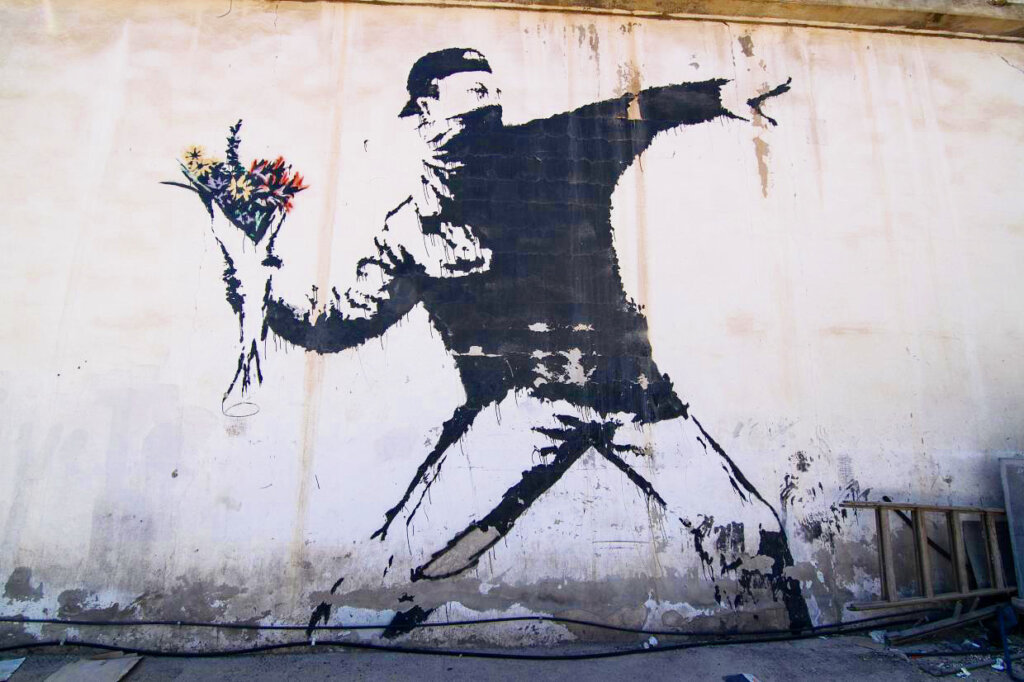
Photo Credit GraffitiStreet
Love Is In The Air by Banksy. Image copyright GraffitiStreet
The ‘Love is in the Air’ mural portrays a militant figure dressed in a baseball cap and bandana, poised to throw a bouquet of flowers instead of a weapon, symbolising the need for peace and love instead of violence. Banksy’s visit to the region was not a one-time affair, as he returned in 2005 to paint nine more murals advocating for freedom and equality for Palestinians. In 2014, he visited the Gaza Strip to bring attention to the people’s plight. Read more here.
Banksy’s commitment to social justice in the region is evident in his work. The artist’s contribution to the region’s art scene is not limited to his murals as in 2017, Banksy opened the Walled Off Hotel in Bethlehem, which displays a triptych of the famous ‘Love is in the Air / Flower Thrower‘, decorated with real dried flowers.
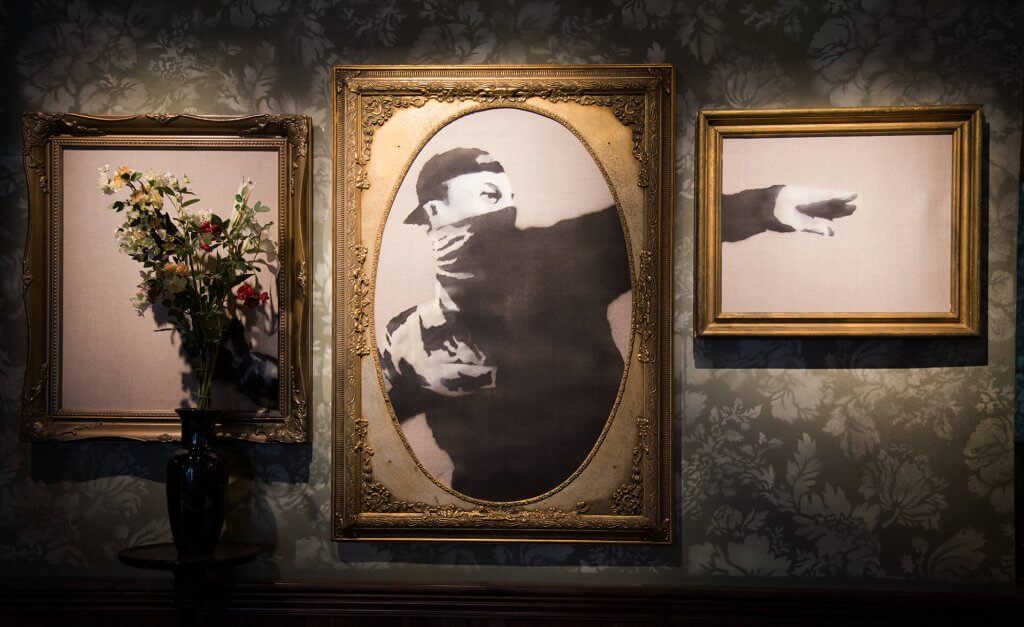
Photo Credit GraffitiStreet
Love Is In The Air by Banksy. Image copyright GraffitiStreet
Love is in the Air
‘Love is in the Air’ is one of Banksy’s most iconic works, and he has created various versions, including canvas works and paper prints with different colourways. The original ‘Love is in the Air’ was released in 2003 as an edition of 500, with around 50 being signed. Release prices were GBP 40 (unsigned) and GBP 80 (signed) back in 2003.
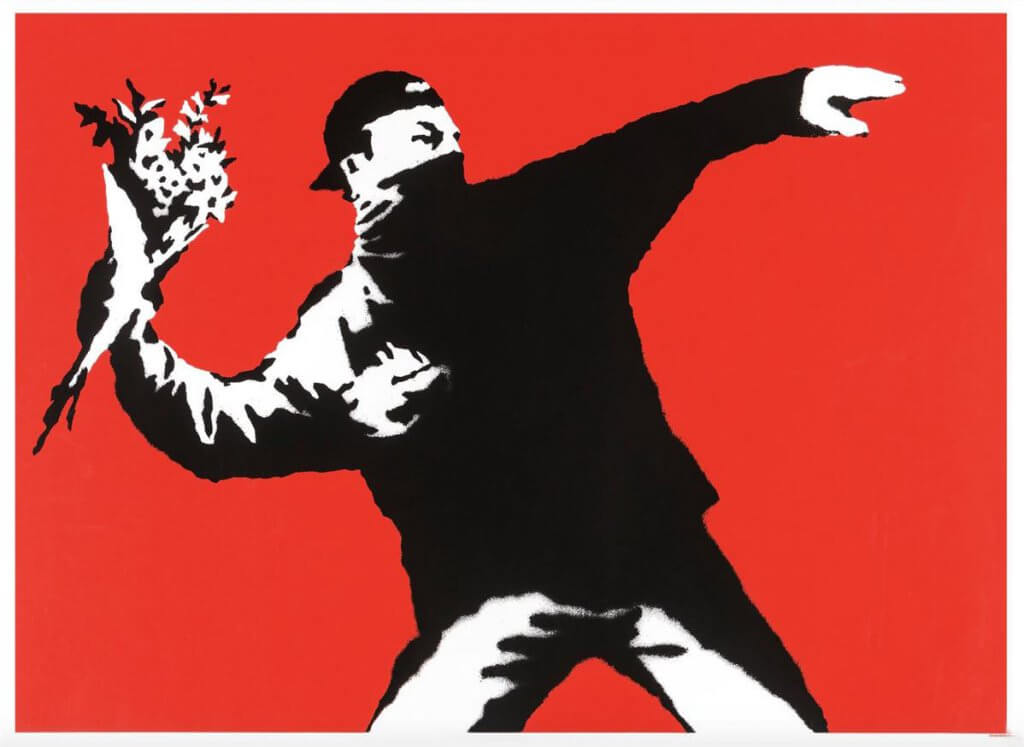
Photo Credit GraffitiStreet
Love Is In The Air by Banksy. Image copyright GraffitiStreet
Love Is In the Air 2003
Medium: Screenprint in colours on wove paper
Size: 50×70 cm (19 3/4 x 27 1/2 inches)
Total Edition: 500 (of which around 50 were signed) Artist’s Proofs: 27 signed AP
Signed: in black pen lower right (not necessarily numbered under 50)
Publisher: Pictures on Walls
GDP Flower Thrower
GDP Flower Thrower (Grey) (Signed) is a 300 edition Screen print on 1500 micron board and was first revealed at Banksy’s shop “Gross Domestic Product”. The triptych piece is framed to the same artist’s spec displayed at Banksy’s “Gross Domestic Product” show in Croydon in 2019. Read more here.
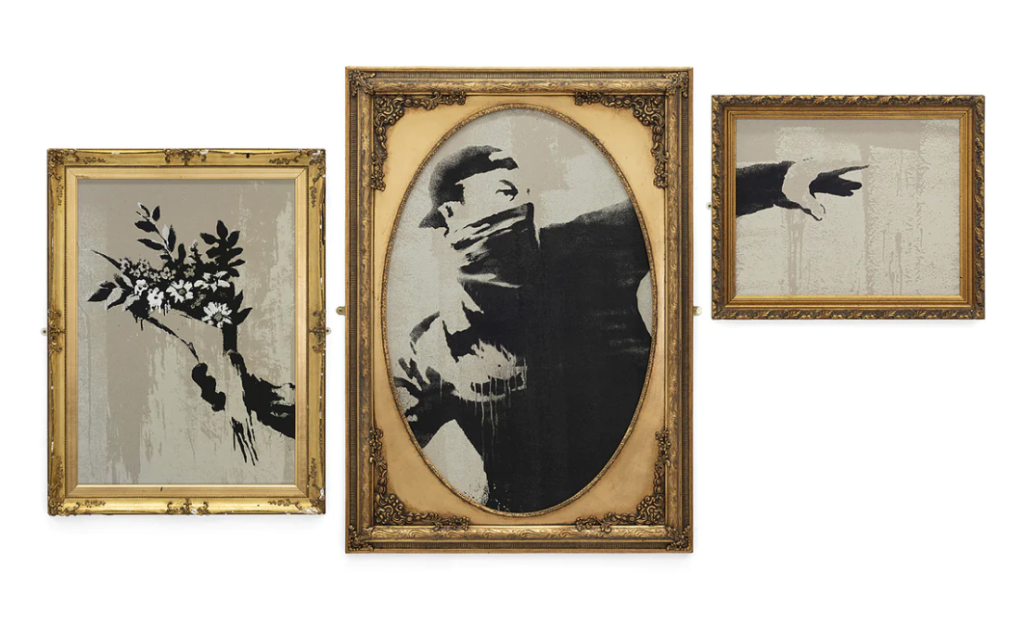
Banksy, GDP Flower Thrower Triptych, Gross domestic product Store, Croydon. Image © Banksy
Medium: Screen print on 1500 micron board
Edition: 300
Size: Left piece 55 x 75cm | Centre piece 61 x 92cm | Right piece 47 x 37cm
Description: Signed & numbered by The Artist. Framed to exact same artist’s spec as displayed at Banksy’s Gross Domestic Product show in Croydon in 2019.
Year: 2019
Wall and Piece
The iconic artwork is also featured in Banksy’s book, ‘Wall and Piece‘. Wall and Piece is a play on ‘War and Peace’ a literary work by Russian author Leo Tolstoy.
Banksy’s fourth book, “Wall and Piece,” was published in 2005 by Century. Upon opening the book, readers are greeted with a colourful collection of stencil art, vandalism, quotes, and commentary, includingan exhibitionof his work at the Tate Gallery in London.
The book includes some of Banksy’s most insightful and inspiring quotes, with topics ranging from politics and capitalism to art and society. In this editorial, we have selected ten of his most notable quotes from the book mixed with some of Banksy’s murals from the last two decades that will inspire you. Read more here.
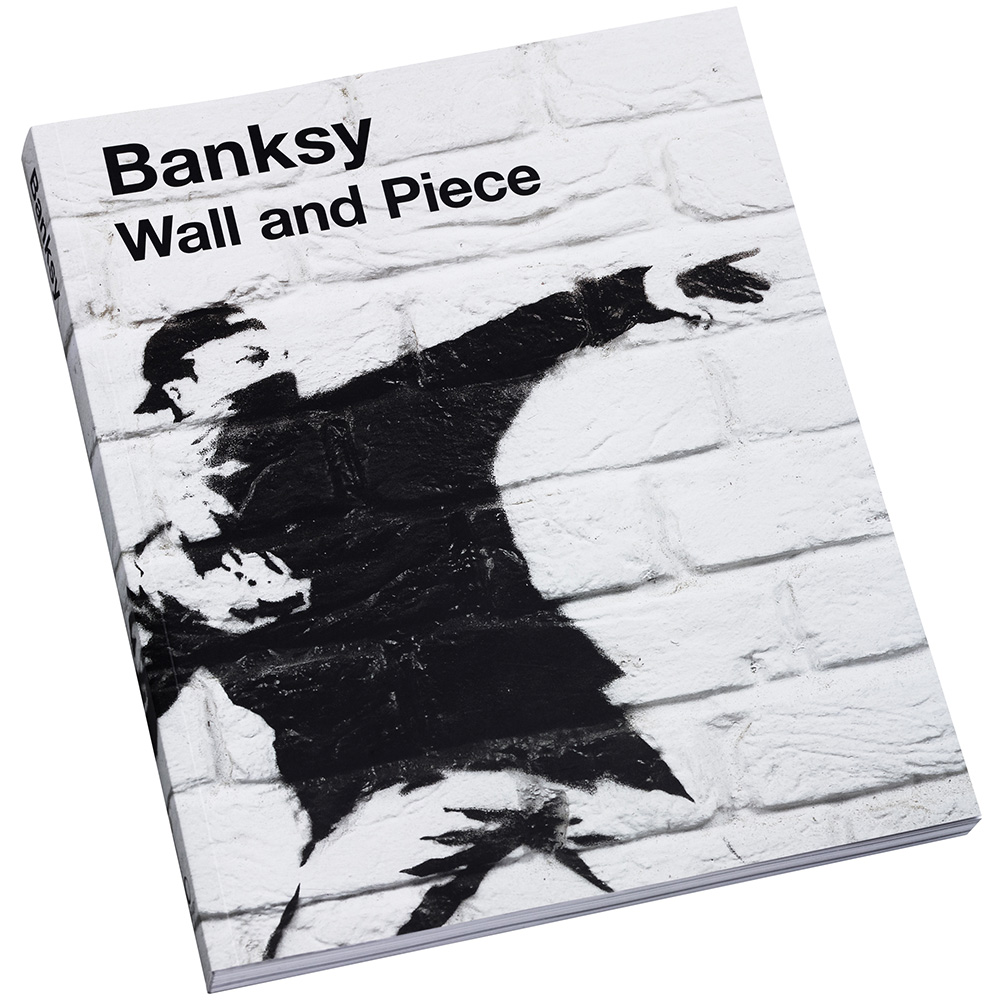
Banksy’s book, ‘Wall and Piece’
Iconic Artwork
It is no surprise that ‘Love is in the Air / Flower Thrower’ is highly sought after by art collectors worldwide. If you are interested in including this iconic artwork in your collection, please don’t hesitate to contact us or check out the Flower Thrower triptych in our online store.
If you can not find what you are looking for, one of our team will be happy to source you your perfect Banksy artwork around your budget.